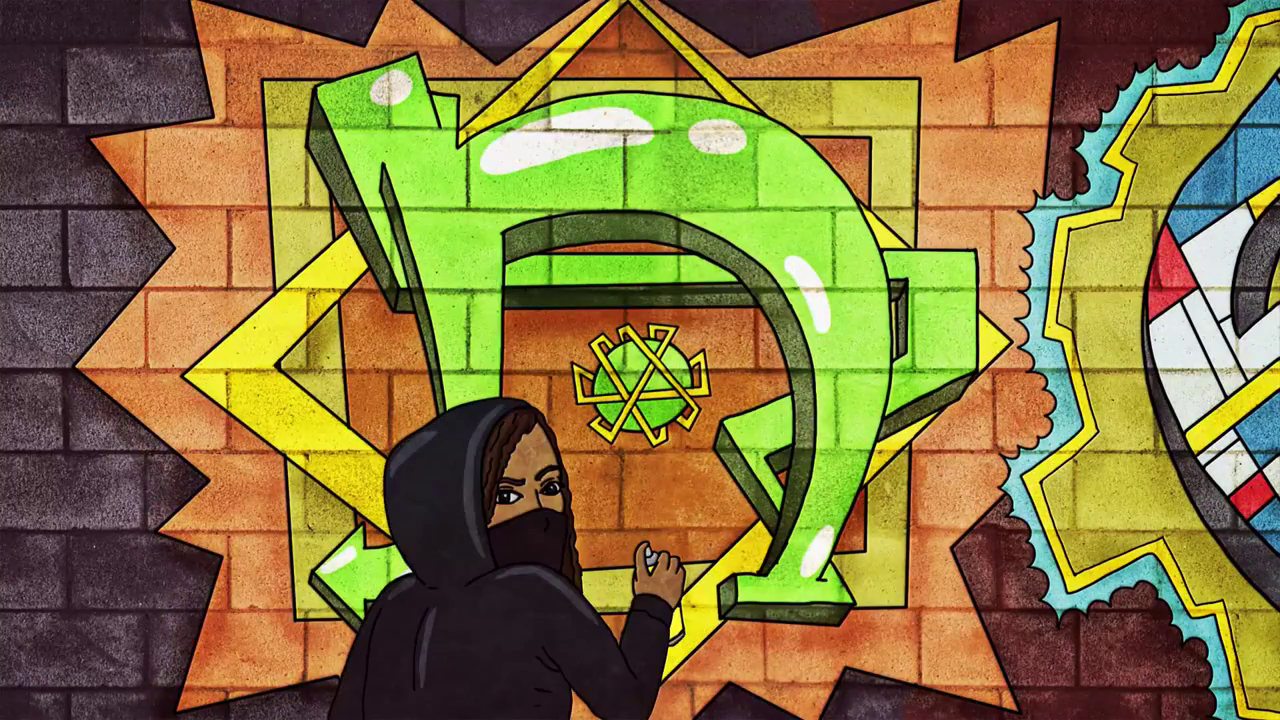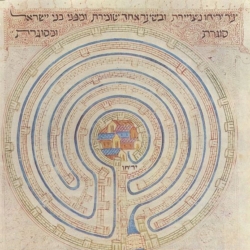Contributor(s): Shared on: 15 December 2018 under the Creative Commons Zero (CC 0) Universal license a Public Domain dedication Categories: Tags: | Initials (Hebrew) | Source (Hebrew) | Translation (English) |
|---|
אב״ג
ית״ץ
|
אֵל בָּרוּךְ גָּדוֹל
יִרְאֶה תּוֹם צִדְקוֹתָיו
|
Blessed great El —
recognize his perfect righteousness. |
קר״ע
שט״ן
|
קָדוֹשׁ רַחוּם עֶלְיוֹן
שׁוּר טוֹהַר נַפְשׁוֹ
|
Compassionate holy Elyon —
notice the purity of his soul. |
נג״ד
יכ״ש
|
נָא גָּדוֹל דָּגוּל
יְגַדֵל כֹּחַ שְׁמִירָתוֹ
|
Please, distinguished great One —
increase the force that guards him. |
בט״ר
צת״ג
|
בְּרַחֲמֵי טָהוֹר רַחֲמֵהוּ
צְדָקָה תָּמִיד גָמְלֵהוּ
|
Love him with the mercy of the pure One.
Constantly reward him with righteousness. |
חק״ב
טנ״ע
|
חַי קָדוֹשׁ בָּרוּךְ
טְהַר נַפְשׁוֹ עֶלְיוֹן
|
Holy blessed Life —
purify his soul, Elyon. |
יג״ל
פז״ק
|
יָהּ גַלֵה לַבֵּן
פְּדוּתֶךָ זָךְ קָדוֹשׁ
|
Yah, reveal to the son
you redeemed — holy, pure |
שק״ו
צי״ת
|
שׁוֹכֵן קֶדֶם וּמֵאָז
צֶדֶק יוֹשֶׁר תּוּמֶיךָ
|
abiding since primordial time:
righteous, your integral innocence/simplicity. |
This is a piyyut containing the 42 letter divine name in an acrostic, recorded by Rabbi Isaiah Horowitz (1565?–1630) in his Shnei Luḥot HaBerit. In his article comparing this with other 42 letter name piyyutim, Ben Newman writes: In the late sixteenth and early seventeenth centuries, discussion of the [42 letter] name and of the piyyutim corresponding to it increases. Perhaps this is due to the rise in popularity of kabbalah after the incredibly prolific era of the kabbalists of 16th c. Tsfat. One rabbi who extensively discusses the name in the late 16th and early 17th centuries is Isaiah Horowitz (1565?–1630) in his Shnei Luḥot HaBerit. In addition to Ana be-Koaḥ, Horowitz records another piyyut which was derived from the name of 42. This piyyut which begins by describing God’s qualities is very interesting, and if my illustrious reader wants to see how it compares to other versions, please refer to the chart in the appendix. One fascinating point regarding this particular piyyut is that it is similar to the well-known El Barukh Gadol De’ah prayer.
The vocalization provided for the unvocalized text in the Shnei Luḥot Habrit is that found in the Sefer Maavar Yabbok (1860 edition). The translation provided here was made by Nir Krakauer, modified by Aharon Varady. Sources
Nir Krakauer is a civil engineering professor at City College of New York.  Rabbi Isaiah Horovitz (Hebrew: ישעיה הלוי הורוויץ), (c. 1565 – March 24, 1630), also known as the Shelah ha-Kadosh (the holy Shelah) after the title of his best-known work, the Shnei Luḥot HaBrit. He was a prominent Levite rabbi and mystic. Isaiah Horovitz was born in Prague around 1565. His first teacher was his father, Avraham ben Shabtai Sheftel Horowitz, a notable scholar and author, and a disciple of Moses Isserles (Rema). Horowitz studied under Meir Lublin and Joshua Falk. He married Chaya, daughter of Abraham Moul, of Vienna, and was a wealthy and active philanthropist, supporting Torah study, especially in Jerusalem. In 1590, in Lublin, he participated in a meeting of the Council of Four Countries, and his signature is on a decree that condemns the purchase of rabbinic positions. In 1602, he was appointed head of Beis Din in Austria, and in 1606 was appointed Rabbi of Frankfurt am Main. In 1614, after serving as rabbi in prominent cities in Europe, he left Frankfurt—following the Fettmilch uprising—and assumed the prestigious position of chief rabbi of Prague. In 1621, after the death of his wife, he moved to Palestine, was appointed rabbi of the Ashkenazic community in Jerusalem, and married Chava, daughter of R. Eleazer. In 1625, he was kidnapped and imprisoned, together with 15 other Jewish rabbis and scholars, by the Pasha (Ibn Faruh) and held for ransom. After 1626, Horowitz moved to Safed, erstwhile home of Kabbalah, and later died in Tiberias on March 24, 1630 (Nissan 11, 5390 on the Hebrew calendar). In his many Kabbalistic, homiletic and halachic works, he stressed the joy in every action, and how one should convert the evil inclination into good, two concepts that influenced Jewish thought through to the eighteenth-century, and greatly influenced the development of the Ḥassidic movement. (via Wikipedia) Aharon Varady (M.A.J.Ed./JTSA Davidson) is a volunteer translator for the Open Siddur Project. If you find any mistakes in his translations, please let him know. Shgiyot mi yavin; Ministarot Naqeni שְׁגִיאוֹת מִי־יָבִין; מִנִּסְתָּרוֹת נַקֵּנִי "Who can know all one's flaws? From hidden errors, correct me" (Psalms 19:13). If you'd like to directly support his work, please consider donating via his Patreon account. (Varady also transcribes prayers and contributes his own original work besides serving as the primary shammes for the Open Siddur Project and its website, opensiddur.org.) Read a comment / Leave a comment (moderated) Works of related interest: |













Leave a Reply